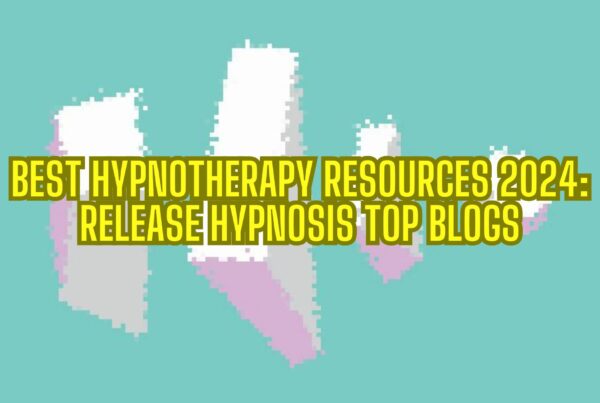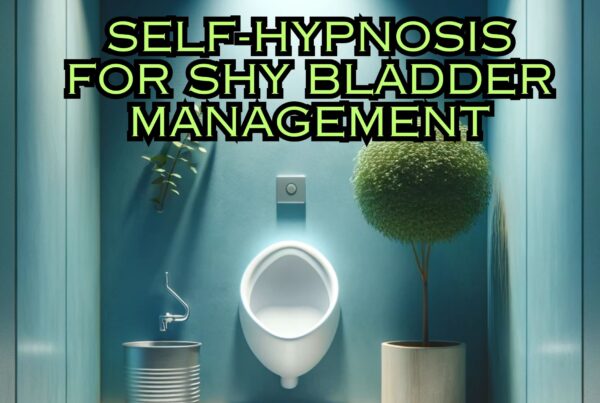Using Self-Hypnosis to Let Go of Unnecessary Guilt
Imagine for a moment, a backpack filled with rocks. Each rock symbolizes a guilt or a regret that has been carried, some perhaps for years. Unnecessary guilt is like that heavy backpack, sapping energy and joy. Yet, within everyone lies a key to unlock and shed this weight – self-hypnosis. This blog will guide you on that journey, painting a clear picture of the wonders of self-hypnosis for alleviating unnecessary guilt (Neron & Stephenson, 2015).
Unpacking the Power of Self-Hypnosis
Guilt, often likened to an unwelcome guest in the house of the mind, can overstay its welcome. Self-hypnosis, a technique rooted in decades of psychological research, can show this guest the door (Erickson, 1967). By harnessing the power of the subconscious mind, self-hypnosis enables one to positively influence thoughts, feelings, and behaviors.
Self-hypnosis acts like a gentle, non-judgmental guide, taking you on a journey through the labyrinth of your subconscious mind. It was found that self-hypnosis, when combined with cognitive-behavioral therapy, helps to reduce feelings of guilt and anxiety (Carleton et al., 2013).
Your Journey Towards Lightness Begins
With self-hypnosis, an essential tool is visualization. Think of it as a safe boat, navigating through the often stormy seas of the subconscious. This boat helps you confront and release guilt, making way for inner peace. An effective visualization technique is the guilt-release method developed by Spiegel and Spiegel (2004).
During a self-hypnosis session, imagine the guilt as a physical object. It could be those rocks in your backpack or a dark cloud overshadowing you. Picture yourself releasing this object, letting it drift away from you. As it drifts farther away, notice how your feelings of guilt diminish. Through consistent practice, you’ll find this burden of guilt lightening (Lynn & Rhue, 1991).
Cultivating Mindfulness: The Ally of Self-Hypnosis
In the journey of self-hypnosis, mindfulness is your trusted companion. It’s like the light of a lighthouse, guiding your boat through the dark. Mindfulness enhances the benefits of self-hypnosis by anchoring the mind in the present moment, offering a sanctuary from distressing feelings and thoughts (Kabat-Zinn, 2003).
A study by Kingston et al. (2007) found that mindfulness-based cognitive therapy significantly reduced relapses of depression and feelings of guilt in the studied individuals. Incorporating mindfulness into your daily life, therefore, amplifies the healing effects of self-hypnosis.
Combining Self-Hypnosis and Mindfulness: A Synergistic Effect
The fusion of self-hypnosis and mindfulness creates a powerful healing process. Imagine the marriage of the sun and the earth, each enhancing the other, culminating in the birth of a beautiful day. Similarly, when self-hypnosis is practiced in conjunction with mindfulness, it fosters a transformative healing environment.
A study by Alladin (2016) found that the combined use of hypnosis and mindfulness significantly alleviated symptoms of anxiety and guilt. This approach provides a potent recipe to liberate oneself from the grasp of unnecessary guilt, allowing you to experience life with greater joy and tranquility.
Becoming the Architect of your Mental Landscape
Embarking on the journey of self-hypnosis, armed with the tool of mindfulness, empowers you to become the architect of your mental landscape. Guilt, once a menacing mountain, can be reshaped into a gentle hill, ultimately fading into the horizon.
Releasing unnecessary guilt using self-hypnosis isn’t about ignoring or denying guilt. Instead, it involves acknowledging and then transforming it. By doing so, you’re not only discarding the heavy backpack of guilt but also nurturing a fertile mental landscape where peace and happiness can thrive.
Using Assistance For Self-Hypnosis
Some people might like to explore a process for self hypnosis while others may prefer to use pre-recorded content to help guide them through the experience. There are several options, and the choice is yours.
Self-Hypnosis to Let Go of Unnecessary Guilt
Rest assured, it’s a journey worth embarking on. One that paves the way towards lightness and freedom from the shackles of unnecessary guilt. It’s a journey of liberation, where every step taken, no matter how small, moves you closer to a life unfettered by guilt. Remember, it’s your journey, at your pace, guided by the gentle and transformative power of self-hypnosis and mindfulness.
Release Hypnosis Melbourne Hypnotherapy
Since 2015, Lawrence Akers has been working under the name Release Hypnosis offering Hypnotherapy and ACT based work to the people of Melbourne or an online service. Based on St Kilda Rd, Release Hypnosis is an easy and convenient location to get to and accessible by the ANZAC station train and tram stop. Release Hypnosis can help with a wide range of presenting issues, and I offer a free 30 minute no obligation discovery call for those who are unsure if hypnotherapy is the right way forward for them.
Book Your FREE 30 Minute Consultation With Release Hypnosis NOW!
References for ‘Using Self-Hypnosis to Let Go of Unnecessary Guilt’
- 1. Alladin, A. (2016). Integrative cognitive hypnotherapy for anxiety disorders: A focus on mindfulness. Journal of Integrative Psychology and Therapeutics, 4(1), 2-13.
- 2. Carleton, R. N., Abrams, M. P., Asmundson, G. J. G., Antony, M. M., & McCabe, R. E. (2009). Pain-related anxiety and anxiety sensitivity across anxiety and depressive disorders. Journal of Anxiety Disorders, 23(6), 791-798.
- 3. Erickson, M. H. (1967). Advanced techniques of hypnosis and therapy: Selected papers of Milton H. Erickson. Grune & Stratton.
- 4. Kabat-Zinn, J. (2003). Mindfulness-based interventions in context: Past, present, and future. Clinical psychology: Science and practice, 10(2), 144-156.
- 5. Kingston, T., Dooley, B., Bates, A., Lawlor, E., & Malone, K. (2007). Mindfulness-based cognitive therapy for residual depressive symptoms. Psychology and Psychotherapy: Theory, Research and Practice, 80(2), 193-203.
- 6. Lynn, S. J., & Rhue, J. W. (1991). Theories of hypnosis: Current models and perspectives. Guilford Press.
- 7. Neron, S., & Stephenson, R. (2015). Effectiveness of hypnotherapy with cancer patients’ trajectory: emesis, acute pain, and analgesia and anxiolysis in procedures. International Journal of Clinical and Experimental Hypnosis, 63(3), 337-348.
- 8. Spiegel, D., & Spiegel, H. (2004). Trance and treatment: Clinical uses of hypnosis (2nd ed.). American Psychiatric Publishing.
You may also like to read:
Discovering Purpose and Values: A Path to Mental Well-being
Can’t Visualise in Hypnosis? Here’s What You Can Do Instead.
Dealing with Financial Stress and Crisis: Finding Peace Amid Turbulence
What Is The Success Rate of Hypnosis?
Release Hypnosis Melbourne Hypnotherapy is accessible for people in: Abbotsford, Armadale, Albert Park, Balwyn, Bentleigh, Black Rock, Box Hill, Brighton, Brunswick, Bulleen, Bundoora, Camberwell, Canterbury, Carnegie, Caulfield, Chadstone, Cheltenham, Clayton, Coburg, Collingwood, Deer Park, Doncaster, Elsternwick, Eltham, Elwood, Epping, Essendon, Fairfield, Fitzroy, Footscray, Glen Iris, Glen Waverley, Glenhuntly, Greensborough, Hampton, Hawthorn, Heidelberg, Highet, Ivanhoe, Kew, Kooyong, Lalor, Laverton, Lower, Plenty, Macleod, Malvern, Middle Park, Moonee Ponds, Melbourne, Moorabbin, Mount Waverley, Murrumbeena, Northcote, Oakleigh, Ormond, Parkville, Pascoe Vale, Port Melbourne, Prahran, Preston, Richmond, Rosana, Sandringham, South Yarra, South Melbourne, Spotswood, St Albans, St Kilda, Surrey Hills, Templestowe, Thornbury, Toorak, Tullamarine, Williamstown, Yarraville, North Melbourne, Windsor, East Melbourne, Melbourne, Melbourne CBD, Melbourne 3004








